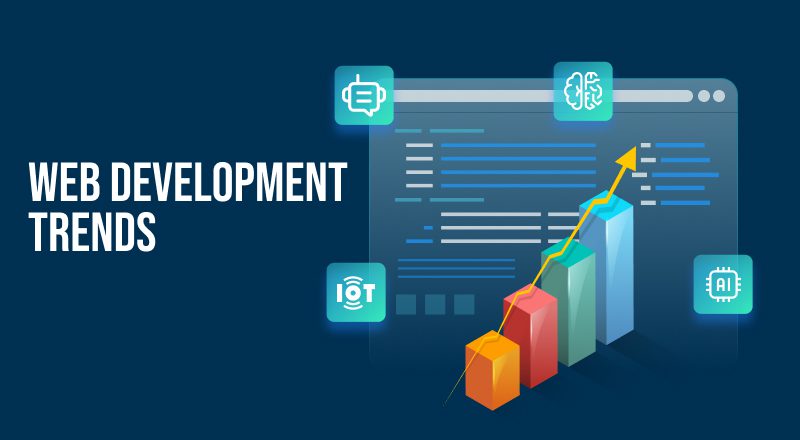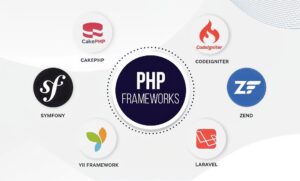In 2025, web development continues to evolve at a rapid pace. Developers and businesses are embracing new frameworks, tools, and technologies to build faster, smarter, and more scalable digital experiences. Web development today goes far beyond just building responsive websites—it’s about creating seamless, intelligent, and high-performance applications.
Here are the top web development trends shaping the future of the web in 2025.
1. Developers Rely on AI to Boost Productivity
Artificial intelligence now plays a central role in modern development workflows. Developers use AI-powered coding tools like GitHub Copilot, Amazon CodeWhisperer, and integrated AI features in IDEs to:
- Generate and complete code
- Detect and fix bugs
- Write documentation and tests automatically
AI also enhances user experiences by powering chatbots, personalization, and accessibility features. In 2025, developers build faster and smarter by integrating AI into both code and product features.
2. Teams Adopt Edge Computing to Improve Performance
To meet rising performance expectations, developers now move computing closer to users. Edge platforms like Cloudflare Workers, Netlify Edge Functions, and Vercel Edge let teams:
- Reduce latency
- Personalize content instantly
- Distribute workloads efficiently
By pushing logic to the edge, developers build faster, more responsive applications for a global audience.
3. Developers Use WebAssembly for High-Performance Web Apps
WebAssembly (Wasm) is no longer a niche technology. Developers use Wasm to run near-native code in the browser, enabling:
- High-speed video and image editing
- Scientific simulations
- Complex games and data visualizations
In 2025, teams use Wasm to bring desktop-level performance to the web, especially in compute-heavy applications.
4. Teams Use Server-Side Rendering and Streaming for Speed and SEO
Frameworks like Next.js, Remix, and Nuxt 3 help developers serve content faster by supporting server-side rendering (SSR) and streaming. By rendering pages on the server and delivering them incrementally, teams:
- Improve time-to-first-byte (TTFB)
- Boost SEO rankings
- Enhance user experience
In 2025, developers adopt SSR and streaming as default strategies for performance-optimized applications.
5. Jamstack Developers Embrace Composable Architectures
Developers have evolved the Jamstack model beyond static sites. In 2025, teams build composable architectures that combine APIs, microservices, and headless CMS platforms like Sanity, Contentful, or Storyblok.
They use tools like:
- Next.js with dynamic routing
- Astro for hybrid content
- Supabase for real-time backends
This new approach gives developers more flexibility and performance without sacrificing scalability.
6. UI Teams Build Component-First Interfaces
Component-driven development remains dominant. Developers use frameworks like React, Vue, Svelte, and SolidJS to build interfaces from reusable components.
Teams:
- Create shared component libraries
- Document components using tools like Storybook
- Integrate designs directly from Figma
By focusing on reusable, scalable UI components, teams ship consistent and maintainable front ends faster.
7. Non-Developers Build with Low-Code and No-Code Tools
Designers, founders, and marketers now build websites and apps without writing code. Tools like Webflow, Framer, Bubble, and Wix Studio allow non-developers to:
- Launch landing pages and apps quickly
- Create dynamic content with logic and animations
- Iterate without technical bottlenecks
Developers still handle custom and scalable solutions, but low-code platforms empower teams to prototype and ship faster.
8. Developers Focus on Developer Experience (DX)
In 2025, teams choose tools that prioritize developer experience. Developers adopt modern build tools like Vite, ESBuild, and Turbopack to reduce build times and improve feedback loops.
They also:
- Use real-time collaboration tools like Liveblocks and StackBlitz
- Choose frameworks with intuitive APIs and great documentation
- Automate workflows with GitHub Actions and cloud CI/CD
A better developer experience leads to faster development and more maintainable code.
9. Teams Deliver Personalized Web Experiences Using Real-Time Data
Developers personalize content using location, preferences, and behavior in real time. By leveraging edge logic, serverless functions, and databases like Firebase and Supabase, teams:
- Customize landing pages
- Adapt UI based on user behavior
- Serve targeted recommendations
Real-time personalization makes web experiences feel tailored and more engaging.
10. Developers Build Accessible and Sustainable Websites
In 2025, developers treat accessibility and sustainability as core responsibilities. Teams follow WCAG 2.2 guidelines, reduce JavaScript bloat, and optimize energy consumption by:
- Compressing images and assets
- Choosing green hosting providers
- Removing unnecessary client-side scripts
They also use tools like Lighthouse, axe DevTools, and the Green Web Foundation to track their progress. By designing inclusive and efficient web experiences, developers build for everyone while protecting the planet.
Final Thoughts
In 2025, web developers lead the charge in creating faster, smarter, and more ethical digital experiences. Whether you’re building apps at the edge, experimenting with AI tools, or rethinking your tech stack, staying current with these trends helps you remain competitive.
By adopting modern tools, embracing composable systems, and focusing on performance and accessibility, developers can build web experiences that truly stand out.




